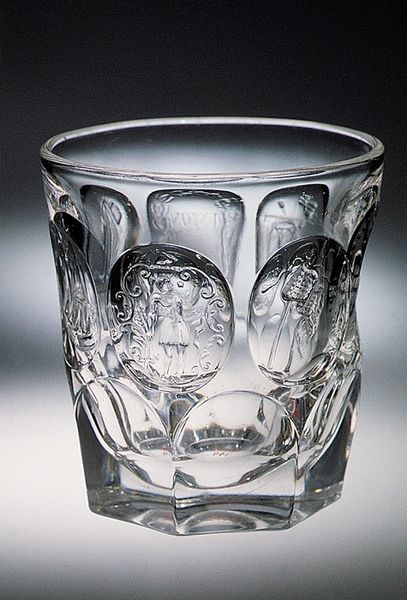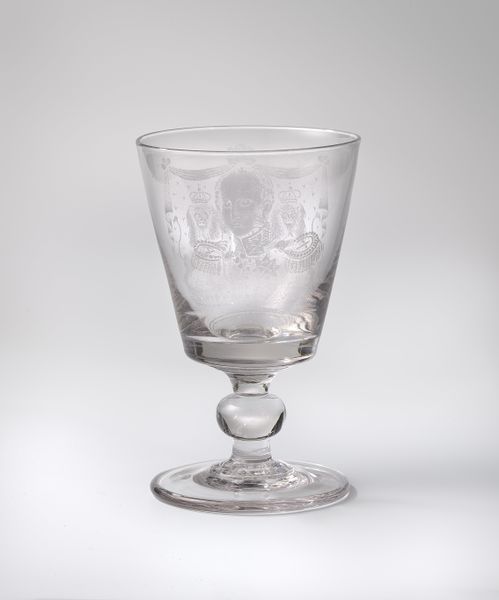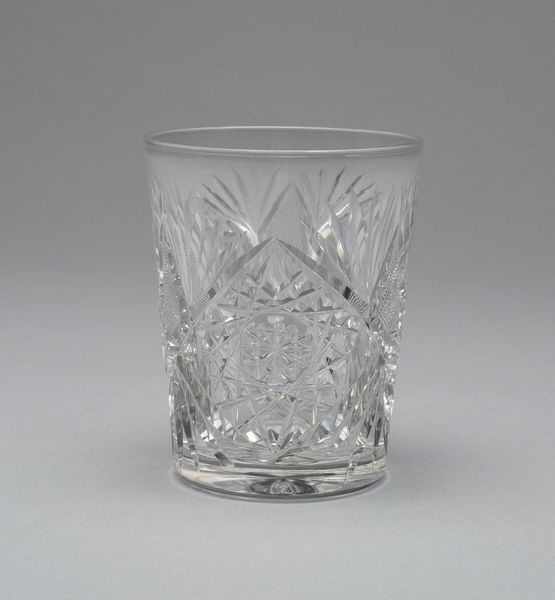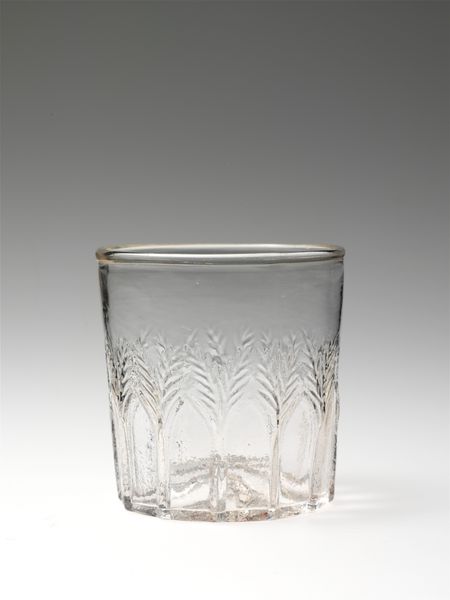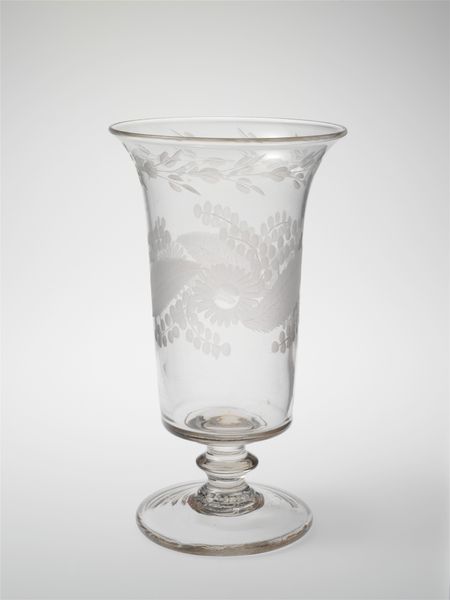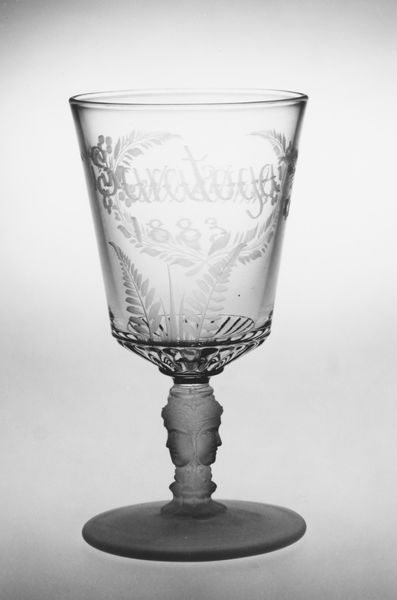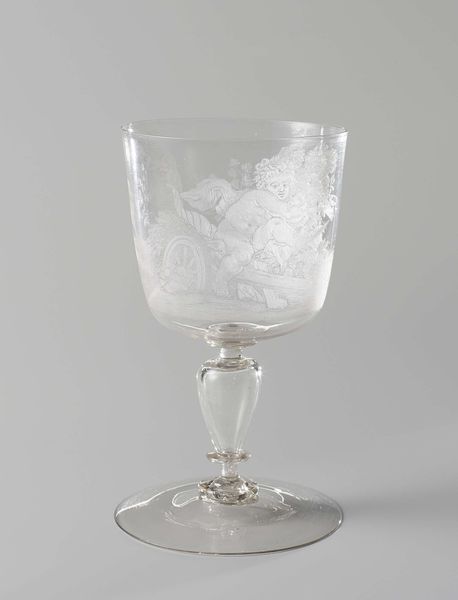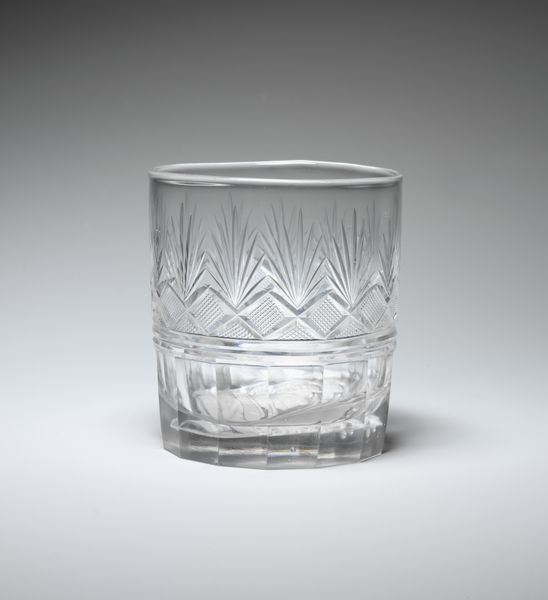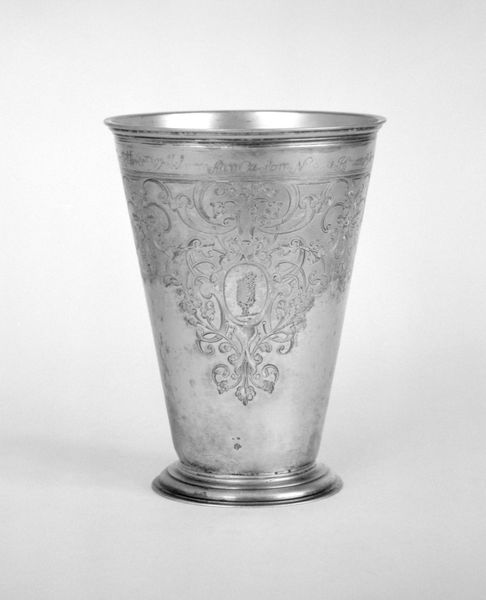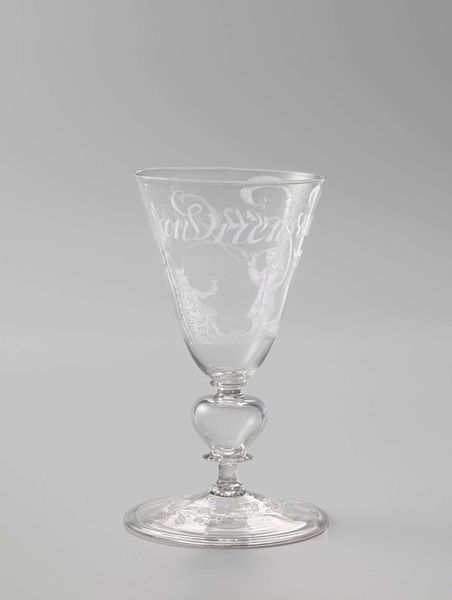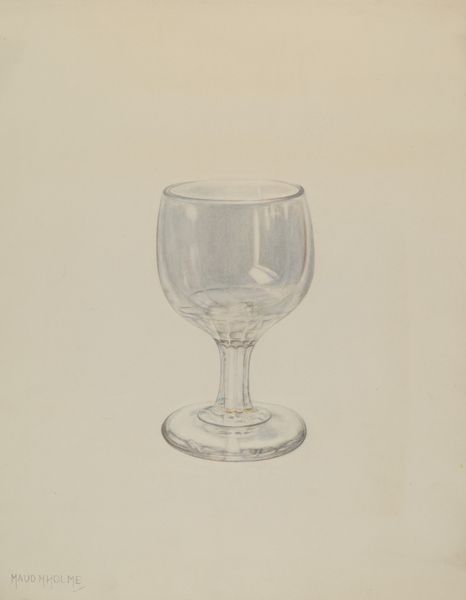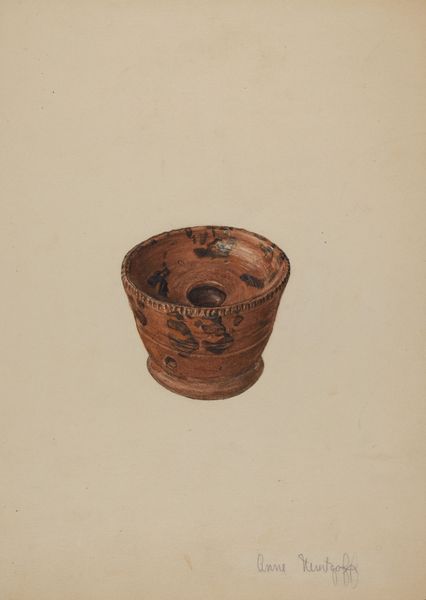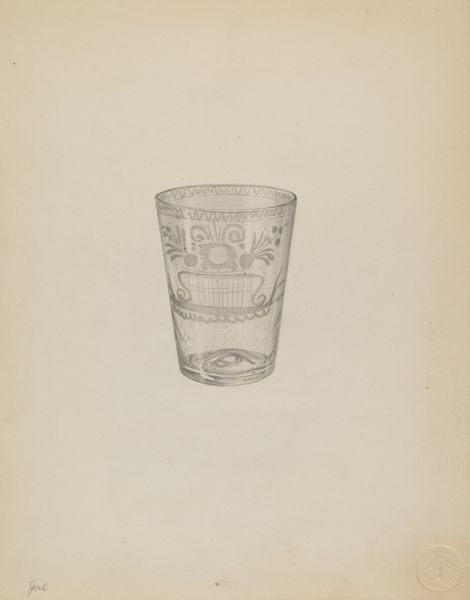
painting, ceramic, glass, sculpture
#
painting
#
landscape
#
ceramic
#
glass
#
sculpture
#
ceramic
#
decorative-art
Dimensions: Overall: 4 × 3 7/16 in. (10.2 × 8.7 cm)
Copyright: Public Domain
Curator: Immediately striking. The painting on this "Beaker," crafted in 1664 by Johann Schaper, gives the glass an otherworldly glow. The combination of painting, ceramic, and glass mediums, creates a seamless blend of art forms. Editor: I agree, there's an immediate intimacy invoked by the scale of the painted figures relative to the beaker itself, especially since similar drinking vessels in the era served as a symbol of prosperity. Does that inform the painting? Curator: It undoubtedly does. Schaper created these as luxury items, tokens of wealth and status traded amongst the elite, during a time of burgeoning global trade. The depicted landscape, reminiscent of an Italian countryside, reflects this cosmopolitanism and hints at worldly refinement associated with its owner. Editor: So the function and setting of this luxury item reflects more about global social currents and a demand for decorative arts pieces at this period of material expansionism. It must have sat in a privileged location. The interplay between the glassy clarity of the vessel and the miniature painting creates an intriguing dialogue. The landscape rendered on glass almost gives the impression of another world accessible by a singular individual alone. Curator: Absolutely. Schaper skillfully integrates the painted landscape with the beaker's form. Note how the curved glass distorts and enhances the imagery. He uses the translucence to his advantage, achieving luminosity by working with light, making it as much a statement about access as prosperity. The beaker transcends mere functionality; it embodies an aspirational lifestyle marketed to an emerging bourgeois class eager to emulate aristocratic taste. Editor: And the material components? I wonder about the challenges inherent in glass and paint, what might its impact on the reception of art practices been during its time. Curator: Fascinating. Glass work often occupied a liminal zone of being either art or craft in Early Modernity. It definitely shaped its reception and, in turn, helped to broaden cultural appreciation for decorative arts outside elite circles as the material economy boomed during this time. It demonstrates the complexities of consumption, global networks, and aesthetic experience in that time. Editor: Thank you. It feels now like I’m holding history in my own hands.
Comments
No comments
Be the first to comment and join the conversation on the ultimate creative platform.
